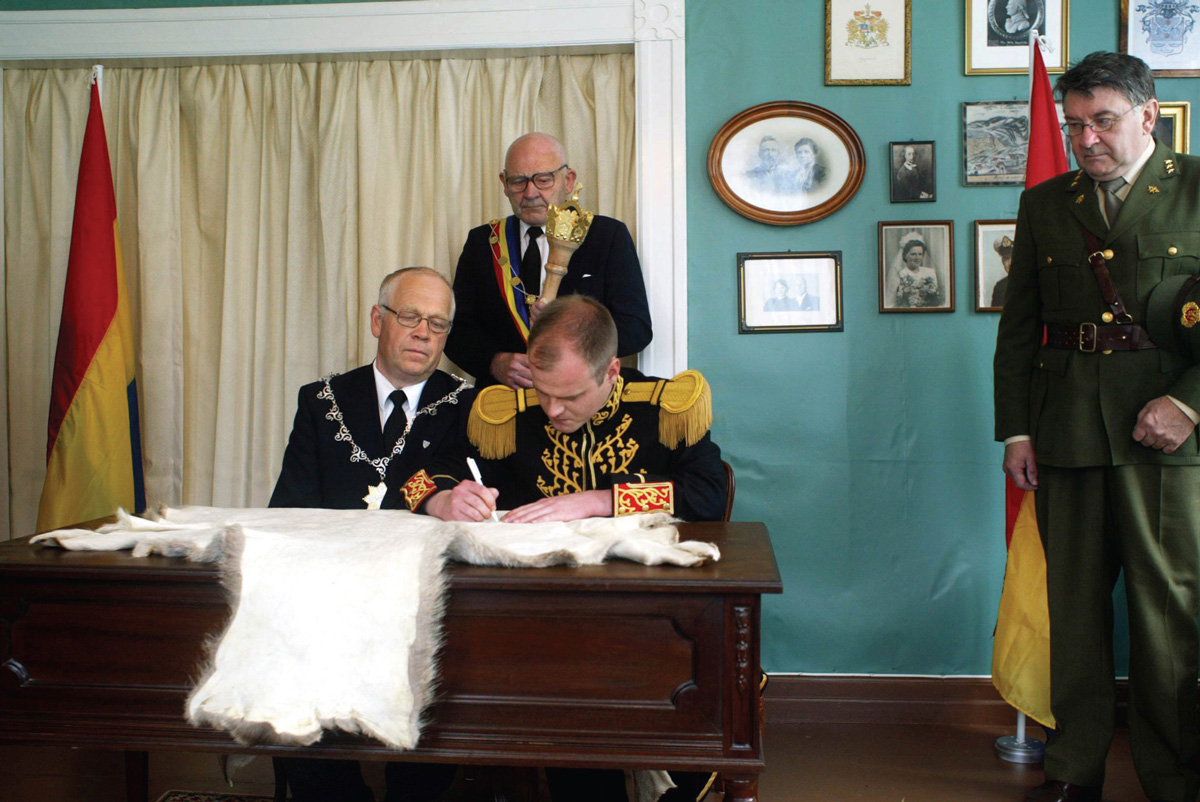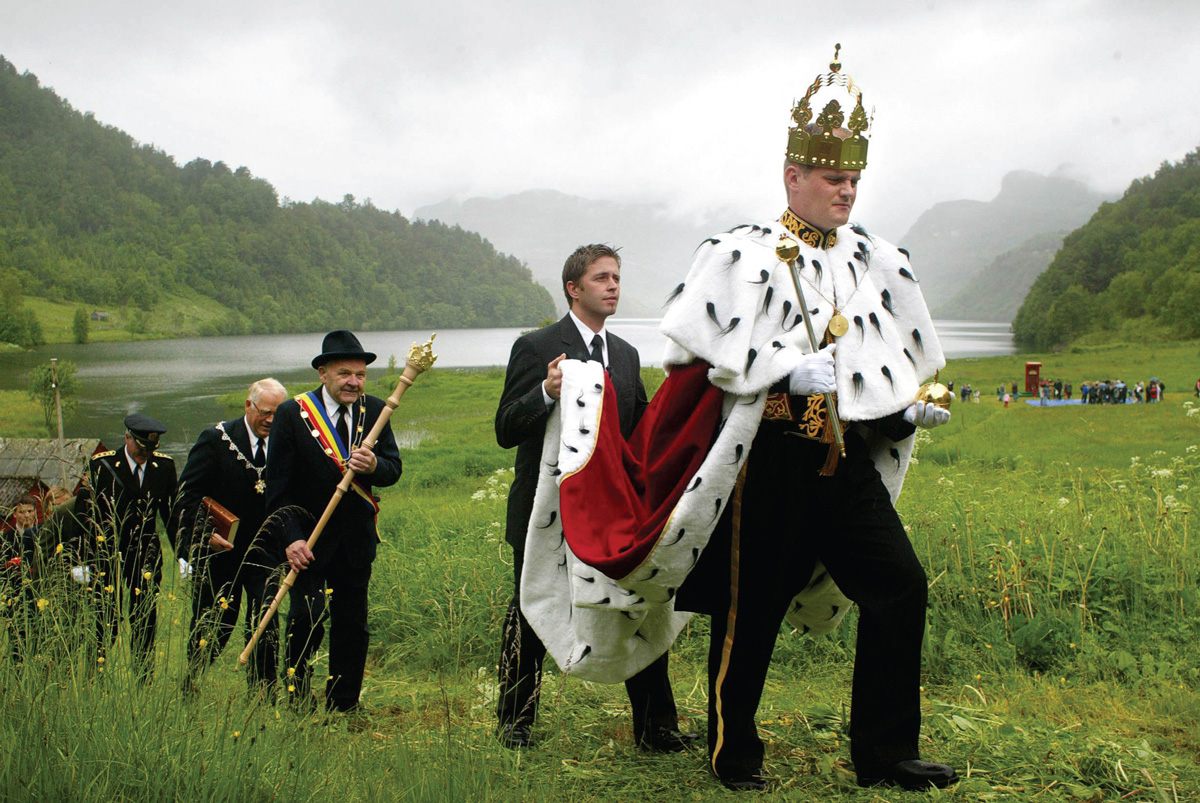The Kingdom of Fusa
The virtues of the viceroy
Robert Blackson

On 21 June 2003, the Norwegian government declared its own Fusa County a kingdom. This regal status was legally conferred with a specific purpose: to question the function and benefits of two equally powered types of governance—that of a kingdom and that of a county. Fusa now exists as both, thus becoming a sort of self-contained control experiment.
His Excellency the Viceroy Morten Holmefjord, a leader in the arts community of Norway, rules the kingdom. Presiding over his coronation ceremony, held along the sacred banks of Gjøn Lake, were the Council of Elders and the Mayor of Fusa. Immediately after these proceedings, the Viceroy and the Norwegian government signed the Engevik Treaty, which outlines a course of peaceful relations to be maintained by the dual leadership.
As is his royal duty, the Viceroy has designated a Fusan viceregal hymn, minted a new state seal, designed a flag, and with support from the Council of Elders, penned a Fusan constitution. This document, which includes relaxed marriage and immigration laws, grants new rights to his 3,750 loyal subjects. The Viceroy has also founded a thriving new currency. The kruna’s exchange rate against the standard Norwegian kroner (currently one Fusan kruna = 100 Norwegian kroner) is slowly boosting the Fusan economy and tourist industry.

On 12 September 2005 a people’s election coinciding with the Norwegian national elections will decide the future of the Fusan monarchy. A majority vote in favor of the Viceroy will make him a sovereign and permanent leader of the Kingdom of Fusa. If the Viceroy loses the election, the Kingdom of Fusa will dissolve, and Mr. Holmefjord will seek political asylum in an undisclosed location in Africa.
Robert Blackson is the curator of the Reg Vardy Gallery at the University of Sunderland, UK. In 2004 he curated “We Could Have Invited Everyone,” an exhibition researching the formation of independent principalities, micronations, and secret societies.